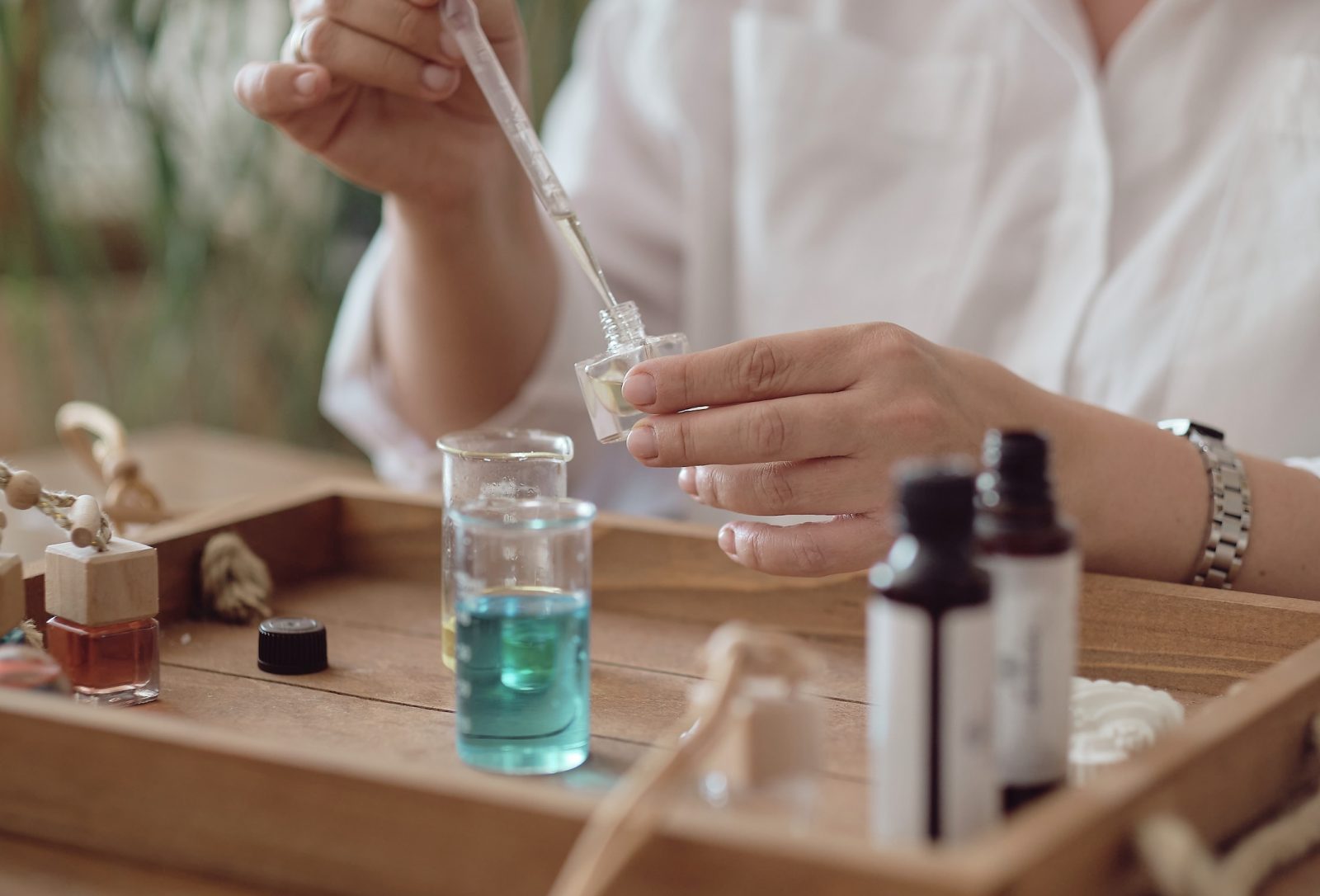It’s an olfactory signature that conveys your personality, sparks memories, and sets the mood for the day. Yet, many of us settle for off-the-shelf fragrances that, while pleasant, don’t capture our individual essence. The satisfaction derived from creating your own signature fragrance is indeed unparalleled, an intimate scent story that is purely yours.
Reader's Roadmap
Understanding Fragrance Notes
Perfumes aren’t just single-note melodies; they’re symphonies composed of top, middle, and base notes. Top notes are the first to reach your nose, such as vanilla perfume scents, offering an initial impression with their fresh, vibrant characteristics. These evaporate quickly, giving way to the middle or ‘heart’ notes – the core of the perfume. Heart notes are well-rounded, full-bodied, and last longer, setting the stage for the base notes.
Identifying Your Preferences
Before you embark on your perfume-making journey, it’s crucial to identify your scent preferences. Are you drawn towards floral fragrances, or do you gravitate towards woody, earthy notes? Maybe citrusy scents invigorate you, or perhaps sweet, spicy tones soothe your senses. Exploring your scent preferences involves more than identifying the categories you’re drawn to; it’s about reflecting on the memories and emotions that certain scents evoke.
Researching Perfume Ingredients
Perfume ingredients are as varied as the scents themselves. Essential oils, absolutes, and synthetic compounds each offer a different olfactory palette to work with. While exploring these ingredients, it’s important to consider their origin, sustainability, and ethical sourcing. Companies like Dossier have pioneered in this space, offering high-quality, ethically sourced fragrances that are affordable and accessible. Dossier’s focus on clean ingredients, sustainability, and fair pricing echoes the ethos of conscientious perfume crafting.
Building a Fragrance Pyramid
The fragrance pyramid is your blueprint for your perfume, guiding the proportions and layering of your chosen scents. The key here is balance and harmony. You want your notes to complement each other, not compete. Experimentation is key, and Dossier perfumes are a fantastic reference point. Known for their premium, long-lasting fragrances, Dossier offers a range of scents that beautifully illustrate how different notes harmonize together.
Experimenting with Blending Techniques
Blending is an art, and mastering it takes patience, experimentation, and a keen nose. Techniques like layering, dilution, and accords can help you create your desired scent profile. Layering involves adding your notes one by one, while dilution adjusts the strength of the fragrance. Accords are harmonious combinations of several notes that create a new, distinct scent.
Considering Seasonal and Occasional Factors
Your signature scent can adapt to the rhythm of seasons and occasions. A light, refreshing scent with notes of mint or citrus can be perfect for summer, while a comforting blend of cinnamon and vanilla could be just right for winter. Similarly, you might want a lively, energetic scent for a party or a calming, soothing fragrance for a quiet evening at home.
Allowing for Maturation and Development
Just like a fine wine, a perfume blend needs time to mature and develop. This allows the different notes to meld together, resulting in a more complex and rounded scent. After blending your ingredients, let your perfume sit for a few weeks or even months. Test and refine it periodically, observing how it evolves over time.
Packaging and Presentation
Once you’re satisfied with your blend, it’s time to think about packaging. Choose a bottle design that reflects your personal style and aesthetic, and add a unique touch with personalized labels or embellishments. Packaging is an extension of your fragrance and should represent your personality.
Storing and Preserving the Signature Scent
Store your signature scent correctly to maintain its freshness and longevity. Keep it away from heat, light, and air exposure to preserve the fragrance’s integrity. By following these best practices, you’ll ensure that your signature scent stays fresh and true to its original profile for as long as possible.







Leave a Reply
View Comments